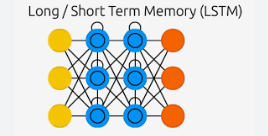Exploring Computer Vision and Neural Networks.
In today's discussion, we delve into the fascinating world of computer vision and how machines recognize images—a concept that once seemed futuristic but is now becoming a reality.
Evolution of Computer Vision
Seven years ago, the prospect of computers having the ability to see and understand objects was merely a topic of theoretical discussion. Imagining robots capable of interacting with humans, shopping independently, or performing complex tasks was intriguing. Today, these concepts are gradually materializing as we witness advancements in the field of computer vision.
(The image above demonstrates how our Robotech team's trained Convolutional Neural Network (CNN) can accurately recognize faces. This neural network-powered robot identifies my face and suggests my real name, "Zack," based on its training)
The Role of Neural Networks
Neural networks play a crucial role in enabling machines to interpret visual data. One prominent type is the Recurrent Neural Network (RNN), specifically designed for sequence data like time series or natural language. RNNs possess looping connections that retain memory of past inputs, making them adept at tasks such as speech recognition, language modeling, and sentiment analysis.
Diverse Applications of Neural Networks
At Robotech Digital Solutions, we advocate for the adoption and understanding of various neural network architectures due to their revolutionary impact on machine learning and AI. Some noteworthy examples include:
Long Short-Term Memory (LSTM) Networks: Addressing the challenge of learning long-range dependencies in sequence data by incorporating gated units.
Utilizing a dual-network framework to generate synthetic data and discern between real and synthetic data—an invaluable tool for tasks like image generation and unsupervised learning.
Autoencoders: Specialized in unsupervised learning, autoencoders compress input data into a meaningful representation, serving applications like data denoising and anomaly detection.
Convolutional Neural Networks (CNNs):
Recursive Neural Networks (Tree Neural Networks): Ideal for structured data tasks like natural language parsing, leveraging hierarchical structures to process and analyze information.
Transformer Networks: Leveraging self-attention mechanisms to capture relationships within sequences, proving highly effective in natural language processing tasks such as machine translation and text generation.
Deep Feedforward Networks (Multilayer Perceptrons): Simple yet powerful architectures for tasks like classification and regression, consisting of multiple layers of interconnected neurons.
These neural networks, each designed with unique capabilities, collectively drive innovations across diverse fields—from image analysis and natural language processing to reinforcement learning and robotics. As we continue to explore the depths of neural networks, the possibilities for intelligent systems and automated decision-making are limitless. Join us on this journey into the future of AI and machine learning!








Comments
Post a Comment